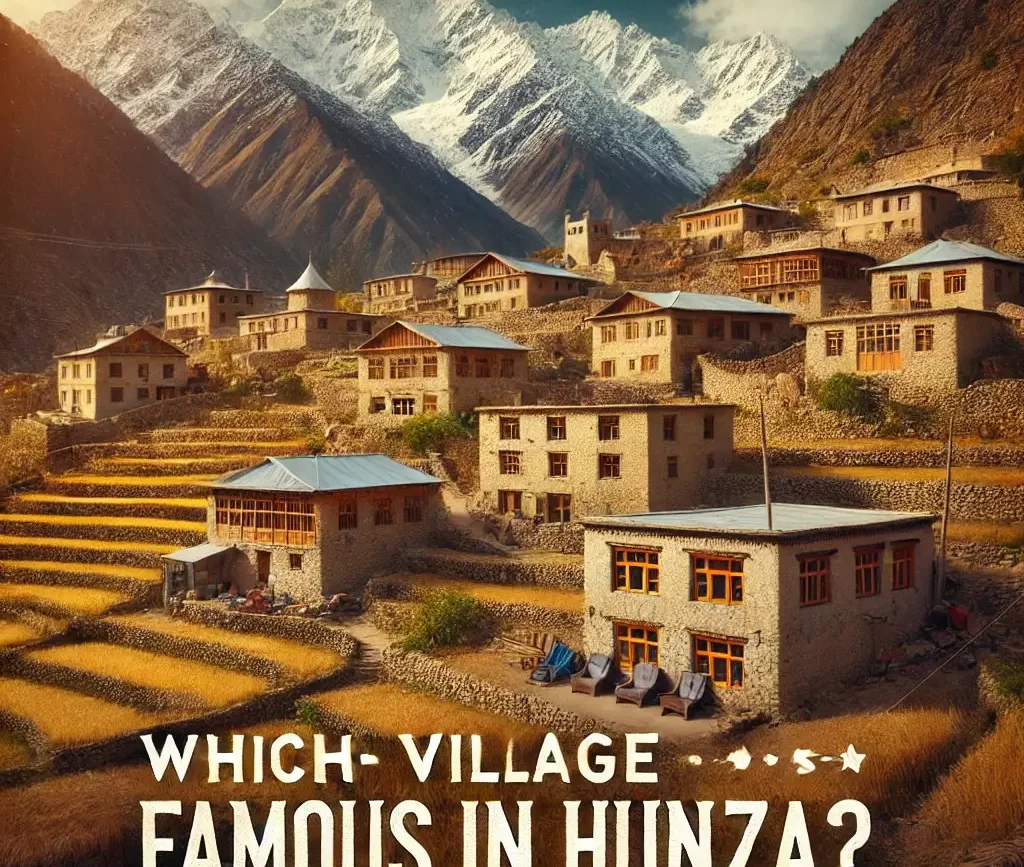Nestled in the picturesque landscape of Gilgit-Baltistan, the Hunza Valley charms visitors with its breathtaking scenery and hospitable communities. Among the many captivating villages, Altit Village stands out for its historical and cultural significance. Altit Village is famous in Hunza Valley for its ancient fort, Altit Fort, which serves as a stunning testament to the region’s rich heritage.

Visitors to Altit can experience not only the architectural prowess of the fort but also the village’s vibrant cultural traditions. This quaint settlement offers a unique glimpse into the past, with narrow lanes and stone houses that evoke the essence of ancient times. The cultural experience is enriched by the lush apricot orchards that flank the village, offering some of the finest organic produce in the region.
Beyond its historical allure, Altit Village is also a gateway to adventure, situated amidst the dramatic peaks of the Karakoram mountain range. Travelers can indulge in trekking and explore the captivating landscapes that define this remarkable part of Northern areas of Pakistan. The combination of history, culture, and natural beauty makes Altit a must-visit gem in Hunza.
Geographical Overview of Hunza Valley

Located in the picturesque region of Gilgit-Baltistan, Hunza Valley is renowned for its spectacular landscapes and strategic importance. Its high-altitude setting offers a unique climate that attracts visitors for various outdoor activities.
Location and Accessibility
Hunza Valley stretches along the Hunza River and is bordered by several key areas: Ishkoman to the northwest and Shigar to the southeast. The Wakhan Corridor in Afghanistan lies to the north, while China’s Xinjiang region is to the northeast. This valley is not only known for its high-altitude beauty but also for its accessibility via the Karakoram Highway, which connects it to major cities like Gilgit and beyond. Karimabad, the main town, serves as a cultural hub, offering easy access to historical sites like Baltit Fort and Altit Fort.
Climate and Best Travel Seasons
Situated at approximately 2,438 meters (7,999 feet) above sea level, Hunza Valley experiences a distinct seasonal climate. The warmest months are from May to September, making it the ideal period for travel, with temperatures ranging from 15°C to 30°C. Winters can be harsh with temperatures dropping below freezing, accompanied by snow. Spring and early autumn are preferred for trekking and sightseeing, as the weather is generally mild and the natural scenery is breathtakingly colorful during these times.
Cultural Significance

Hunza Valley, renowned for its rich cultural heritage, boasts unique traditional practices and festivals, as well as distinctive local cuisine and crafts. These expressions of culture reflect a deep connection to its history and surroundings.
Traditional Practices and Festivals
Hunza Valley’s cultural life is enriched by a multitude of traditional practices and festivals, which are celebrated with great enthusiasm. Navroz, marking the Persian new year, is one of the prominent festivals, where the communities come together to enjoy music, dance, and gastronomy. Another notable celebration is the Ginani Festival, which signifies the start of the wheat harvest. During this event, the people of Hunza partake in folk dances and songs that pay homage to centuries-old agricultural traditions.
Residents of villages such as Karimabad and Aliabad live by customs that are passed down through generations, often involving communal gatherings and rituals. These events not only reinforce social bonds but also preserve the Valley’s cultural identity among its diverse ethnic groups. Each celebration is an opportunity to share the valley’s heritage with visitors and future generations.
Local Cuisine and Crafts
The culinary traditions of Hunza Valley reflect its agricultural roots and multicultural influences. Some key dishes include Chapshuro and Harissa, both featuring local ingredients such as wheat and apricots. The cuisine is simple yet flavorful, often emphasizing the use of fresh, organic produce from the valley. Meals are central to familial and communal gatherings, strengthening social bonds.
Hunza’s artisanship, particularly in Ganish Village, is known for crafting intricate woodwork and weavings. These crafts are not only important economic activities but also serve as cultural expressions of the region’s aesthetic sensibilities. Traditional attire and decorative items often showcase these crafts, celebrating the artistic skills that have been honed over centuries. Visitors can find locally-made crafts in markets that reflect the rich heritage and creativity of the Hunza people.
Famous Villages and Landmarks

Hunza Valley, known for its breathtaking beauty, houses some renowned villages and historical landmarks. Karimabad, a prominent village, offers rich cultural heritage through its ancient forts and vibrant atmosphere.
Karimabad: A Historical Hub
Karimabad stands out as a significant village in Hunza Valley. It is known for its stunning vistas and historical richness. The village is often visited for its well-preserved architecture, reflecting a blend of ancient and modern influences. Visitors are greeted by the warmth of the local community and the myriad colors of apricot and cherry blossoms.
The position of Karimabad provides sweeping views of the valley, making it a photographer’s delight. It is also a hub for local crafts, offering unique handmade souvenirs. The village’s authenticity and charm attract travelers looking to immerse themselves in local culture and history.
Altit and Baltit: Fortresses of the Past
Altit and Baltit forts are iconic landmarks, each carrying centuries-old history. Baltit Fort, perched above Karimabad, is a testament to the region’s administrative past. The fort’s strategic position offered defense and control over the valley. It now serves as a museum, showcasing artifacts and narrating tales of bygone eras.
Altit Fort, older than Baltit, boasts a remarkable restoration story. Restored through international collaboration, it highlights medieval Tibetan influences in its architecture. Visitors can explore its ancient rooms and courtyards, witnessing the lifestyle of the royal family that resided there. Both forts offer panoramic views, drawing history enthusiasts and tourists alike to their timeless allure.
